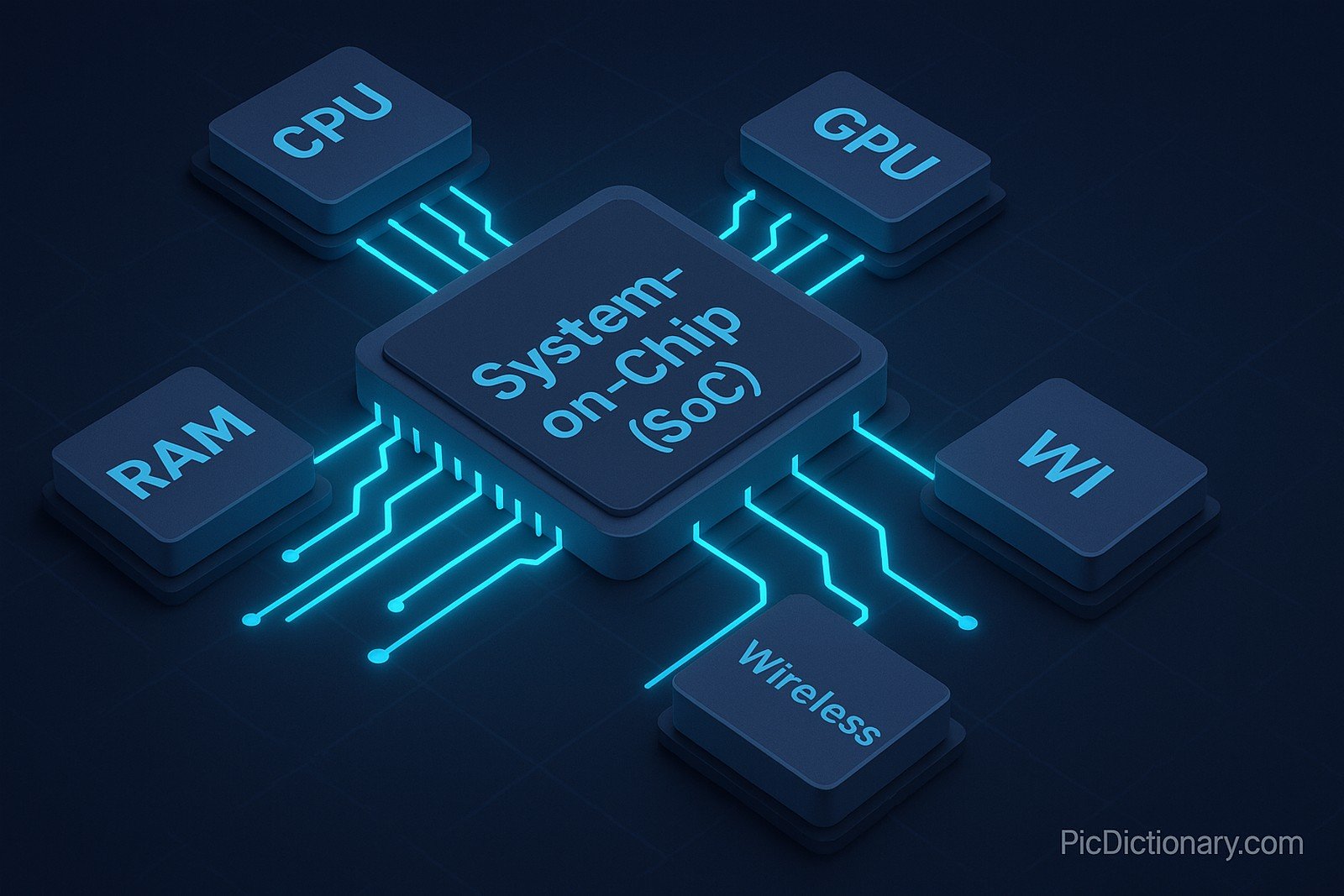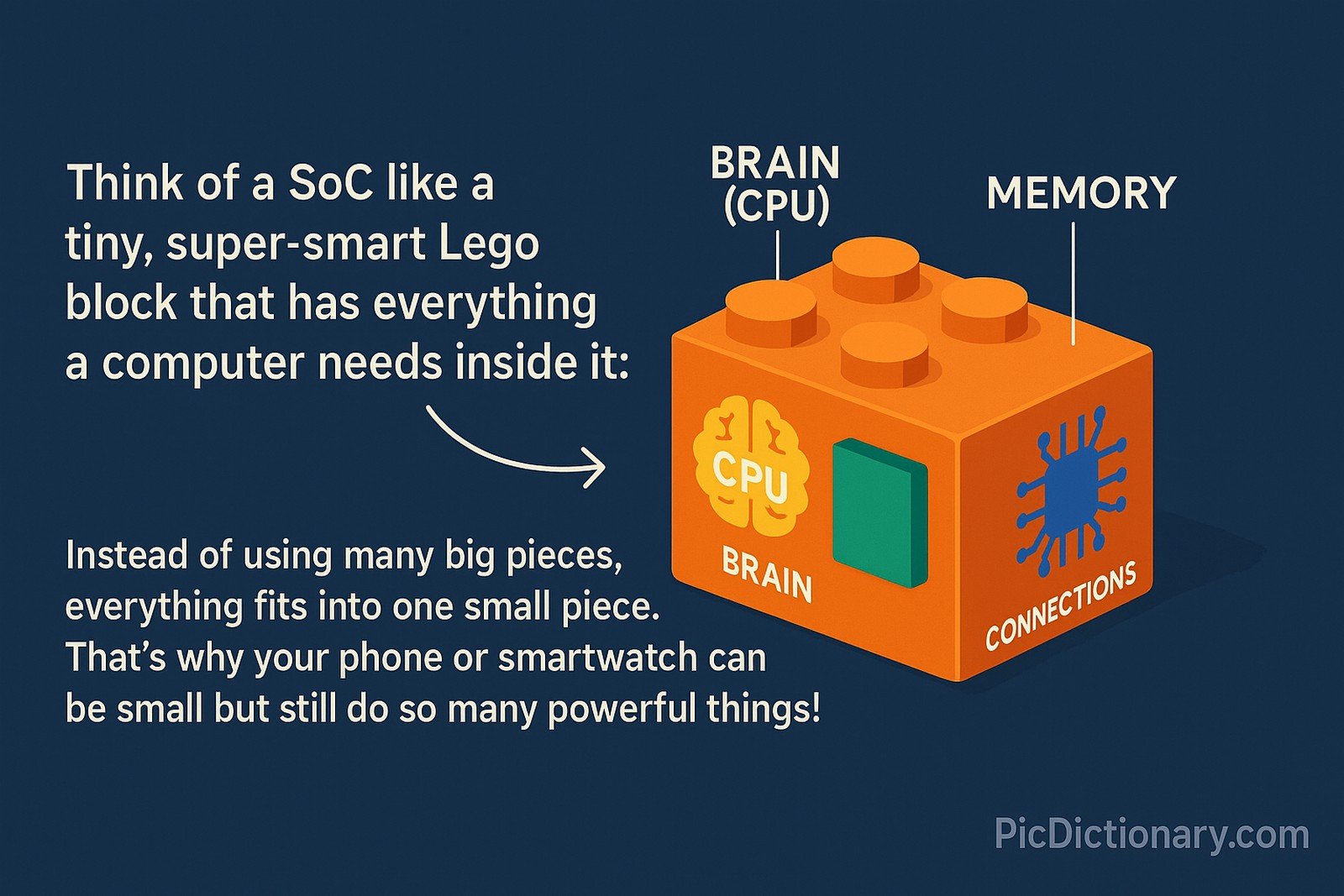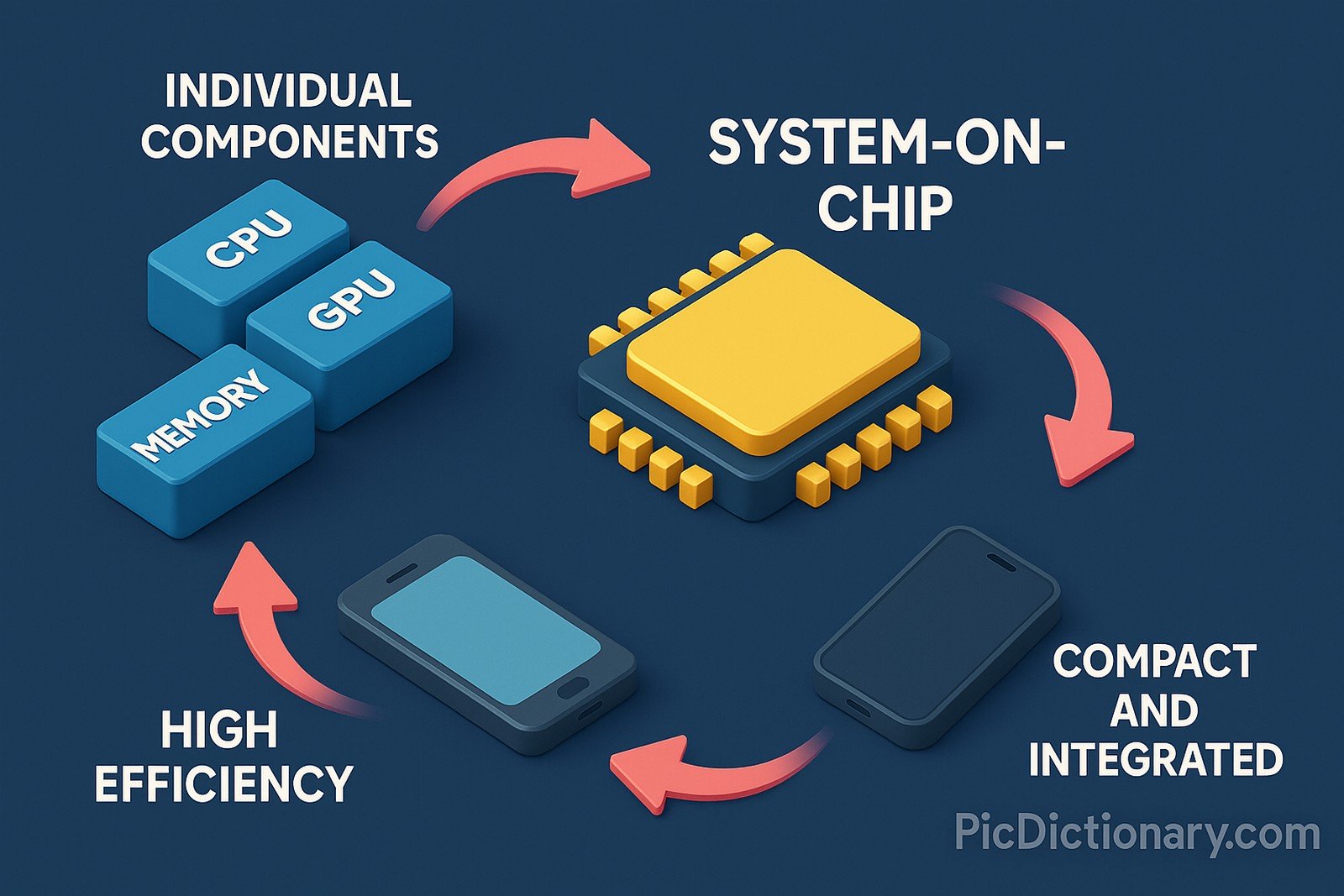System-on-Chip (SoC)

Quick Navigation:
- System-on-Chip (SoC) Definition
- System-on-Chip (SoC) Explained Easy
- System-on-Chip (SoC) Origin
- System-on-Chip (SoC) Etymology
- System-on-Chip (SoC) Usage Trends
- System-on-Chip (SoC) Usage
- System-on-Chip (SoC) Examples in Context
- System-on-Chip (SoC) FAQ
- System-on-Chip (SoC) Related Words
System-on-Chip (SoC) Definition
A System-on-Chip (SoC) is an integrated circuit that combines all components of a computer or electronic system into a single chip. It usually contains a central processing unit (CPU), graphics processing unit (GPU), memory, input/output ports, and other necessary functions. SoCs are widely used in mobile devices, embedded systems, and Internet of Things (IoT) devices because they are compact, energy-efficient, and optimized for specific tasks. These chips reduce power consumption, save space, and improve performance by eliminating the need for multiple separate components.
System-on-Chip (SoC) Explained Easy
Think of a SoC like a tiny, super-smart Lego block that has everything a computer needs inside it: a brain (CPU), memory, and connections to talk to other parts. Instead of using many big pieces, everything fits into one small piece. That’s why your phone or smartwatch can be small but still do so many powerful things!
System-on-Chip (SoC) Origin
The concept of the System-on-Chip (SoC) emerged as a result of the miniaturization of electronic components and increasing demand for compact, efficient systems. In the early 1990s, semiconductor companies began developing SoCs to meet the needs of mobile devices and embedded applications where size and power consumption were critical.
System-on-Chip (SoC) Etymology
The term “System-on-Chip” combines the idea of integrating an entire system of computing components onto a single silicon chip.
System-on-Chip (SoC) Usage Trends
With the rapid rise of mobile technology and IoT devices, SoCs have become central to technological innovation. Smartphones, tablets, smart home devices, and automotive electronics all rely heavily on SoCs for their processing power and energy efficiency. Over the years, demand has surged due to advancements in 5G, AI, and autonomous driving, all of which require powerful but compact computing solutions.
System-on-Chip (SoC) Usage
- Formal/Technical Tagging:
- Embedded Systems
- Microelectronics
- Integrated Circuit Design - Typical Collocations:
- "high-performance SoC"
- "SoC design"
- "low-power SoC"
- "multicore SoC"
System-on-Chip (SoC) Examples in Context
- The latest smartphones use advanced SoCs to balance power efficiency and performance.
- Automotive manufacturers use SoCs for managing infotainment systems and autonomous driving features.
- Wearable fitness trackers rely on SoCs for data processing and connectivity.
System-on-Chip (SoC) FAQ
- What is a System-on-Chip (SoC)?
A SoC is a single chip that integrates all key components of a computer system. - Why are SoCs important in smartphones?
They allow powerful computing in a small, energy-efficient package. - Are SoCs only used in mobile phones?
No, they are used in vehicles, smart devices, drones, and industrial machinery. - What components are inside a SoC?
Usually a CPU, GPU, memory, and connectivity modules. - How does a SoC differ from a CPU?
A CPU is just the processor; a SoC contains the processor and other components. - What is the advantage of using a SoC?
Compact size, energy efficiency, and improved performance. - Do all modern electronics use SoCs?
Many compact devices do, but larger systems might still use separate components. - Can SoCs be customized?
Yes, companies often design custom SoCs for specific needs. - How do SoCs help in power management?
They optimize tasks and hardware functions for better battery life. - Will SoCs continue to evolve?
Yes, especially with advancements in AI, edge computing, and 5G technology.

System-on-Chip (SoC) Related Words
- Categories/Topics:
- Embedded Systems
- Semiconductor Technology
- Mobile Computing
Did you know?
Apple’s M1 and M2 chips are powerful SoCs that revolutionized the computing industry by bringing laptop-level performance and energy efficiency to small, fanless devices like the MacBook Air.
PicDictionary.com is an online dictionary in pictures. If you have questions or suggestions, please reach out to us on WhatsApp or Twitter.Authors | Arjun Vishnu | @ArjunAndVishnu

I am Vishnu. I like AI, Linux, Single Board Computers, and Cloud Computing. I create the web & video content, and I also write for popular websites.
My younger brother, Arjun handles image & video editing. Together, we run a YouTube Channel that's focused on reviewing gadgets and explaining technology.



Comments powered by CComment